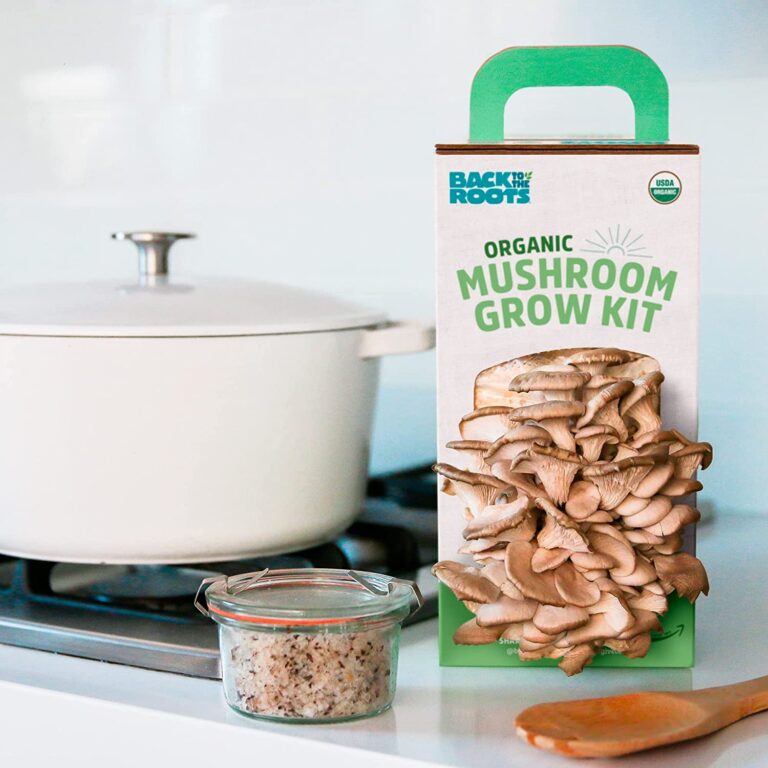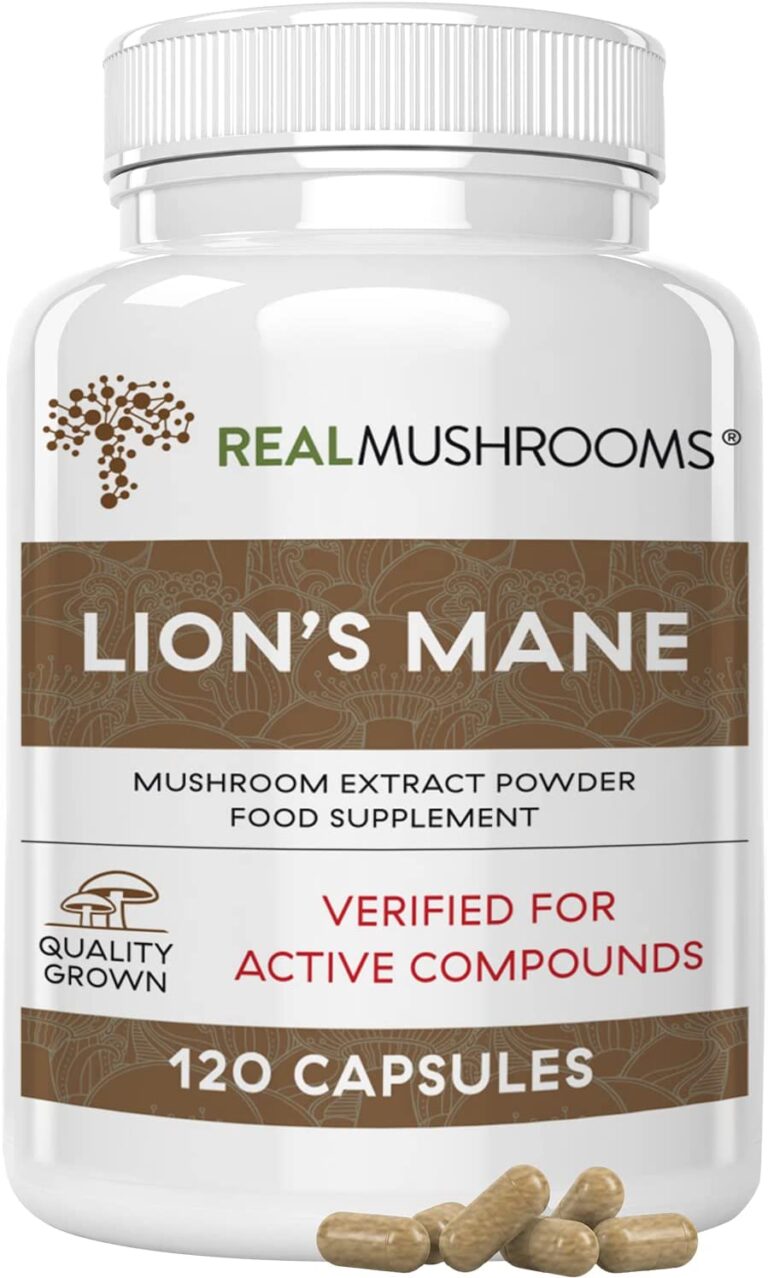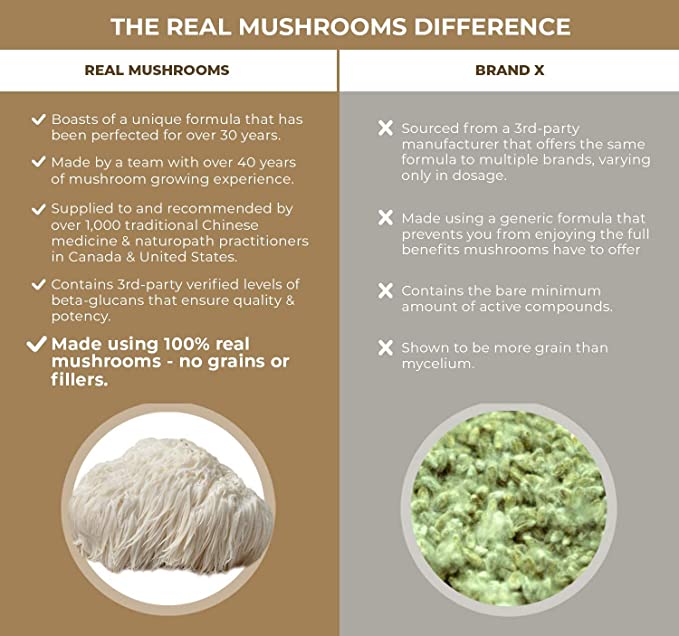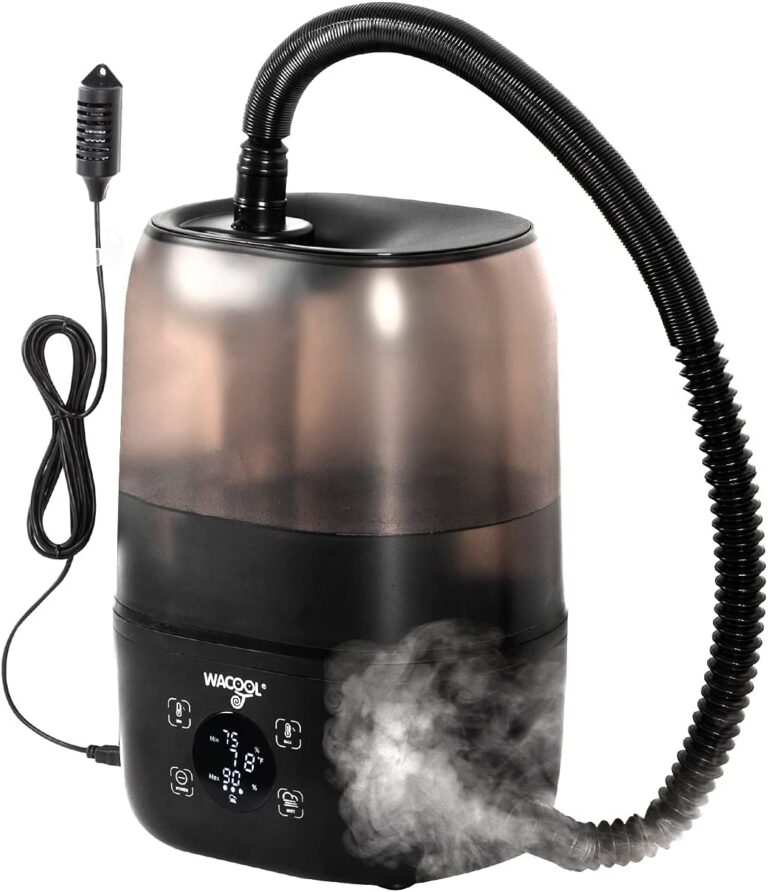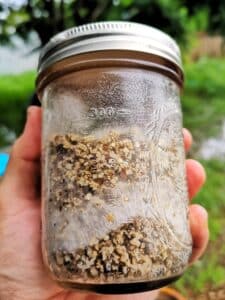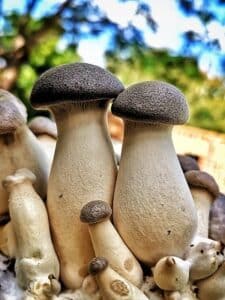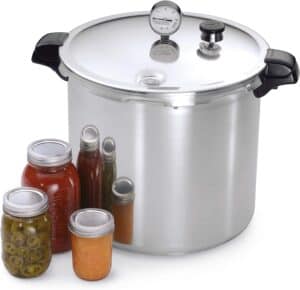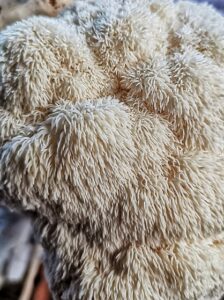Welcome to our comprehensive guide on how to grow King Oyster mushrooms, one of the most sought-after gourmet mushrooms prized for their savory flavor and meaty texture. In this article, we delve into the fascinating process of cultivating King Oyster mushrooms at home or in a commercial setting, guiding you through every step from spore to harvest.
King Oyster mushrooms, scientifically known as Pleurotus eryngii, stand out in the culinary world due to their thick, edible stems and small caps, making them a versatile ingredient in a variety of dishes. Whether you’re a hobbyist looking to grow mushrooms at home, a commercial farmer seeking to expand your mushroom cultivation, or a culinary enthusiast eager to harvest your own organically grown King Oysters, this article is your go-to resource.
We will cover essential topics such as choosing the right substrate for King Oysters, creating the perfect growing environment, spawn preparation, inoculation techniques, and the best practices for care and maintenance. Additionally, we’ll provide tips on how to achieve optimal fruiting conditions and discuss common challenges and solutions in King Oyster mushroom cultivation.
Join us as we explore the rewarding journey of growing King Oyster mushrooms, and discover the joys of producing these delicious and nutritious fungi right in your own space. Whether you’re an experienced mycologist or a beginner, this guide will equip you with the knowledge and skills needed to successfully cultivate these magnificent mushrooms.
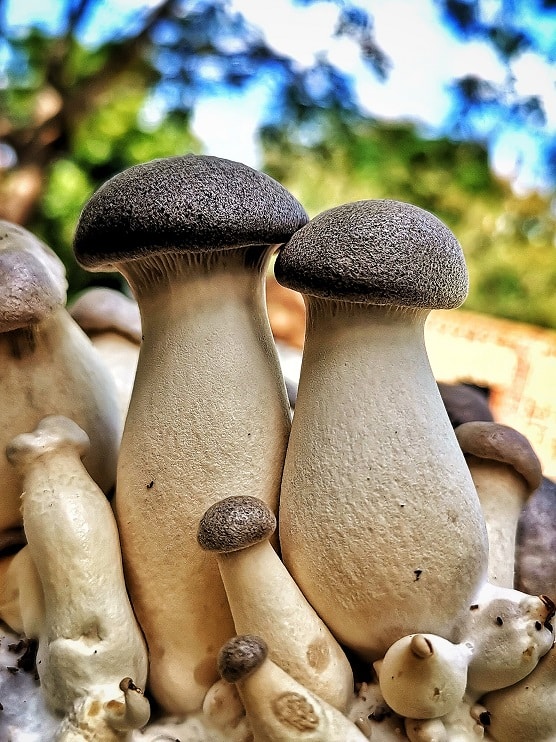
What Do King Oyster Mushrooms Taste Like?
King Oyster mushrooms, a culinary favorite among chefs and food enthusiasts, are renowned for their unique and appealing taste profile. These mushrooms offer a culinary experience that sets them apart from other varieties, making them a standout ingredient in numerous dishes.
The flavor of King Oyster mushrooms is often described as umami-rich, a characteristic that refers to the savory, meaty quality inherent in certain foods. This umami aspect is accompanied by a subtle earthiness that adds depth and complexity to their flavor. Unlike some other mushroom types, King Oysters don’t carry a strong mushroomy taste, which makes them versatile in pairing with a wide array of ingredients.
Texture-wise, King Oyster mushrooms are particularly noteworthy. They possess a firm, substantial texture that holds up well to cooking. When cooked, these mushrooms develop a slightly chewy and tender consistency, often compared to that of abalone or scallops. This meaty texture is one of the reasons they are a popular choice in vegetarian and vegan dishes as a meat substitute.
The stems of King Oyster mushrooms are especially prized for their robustness and ability to absorb flavors from spices, marinades, and cooking methods. When properly cooked, they can take on a crispy exterior while maintaining a juicy interior, offering a delightful contrast in texture.
One of the unique aspects of King Oyster mushrooms is their ability to retain their texture and flavor intensity even after cooking, which is not common in many other mushroom types. Whether they are grilled, sautéed, roasted, or stir-fried, King Oysters maintain their distinct taste and textural integrity, making them a highly desirable ingredient in the culinary world.
In summary, King Oyster mushrooms offer a rich umami flavor coupled with a meaty, satisfying texture, making them a versatile and desirable ingredient in a variety of culinary creations. Their ability to blend with and enhance a wide range of flavors and cooking styles makes them a favorite in kitchens worldwide.
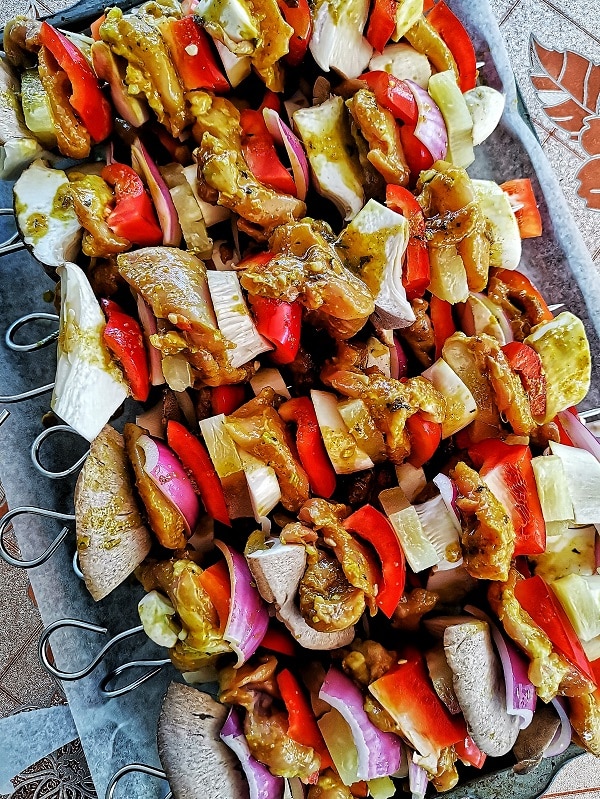
What Substrates Do King Oyster Mushrooms Grow on?
King Oyster mushrooms, known scientifically as Pleurotus eryngii, have specific substrate preferences that are key to their successful cultivation. A substrate, in mushroom growing terms, is the material on which the mushrooms obtain nutrients and grow. For King Oysters, the choice of substrate is crucial for optimal growth and yield.
King Oyster mushrooms are versatile in their substrate requirements and can grow on a variety of materials. Common substrates include:
Hardwood Sawdust: This is the most commonly used substrate for King Oyster mushrooms. Hardwood sawdust, often from oak, maple, or alder, provides the necessary cellulose and lignin that King Oysters thrive on. The sawdust is usually supplemented with wheat bran or rice bran to increase nutrient content.
Straw: Straw, particularly from wheat or rye, can be a good substrate for King Oysters. It’s often chopped and pasteurized before use to eliminate any potential contaminants. Straw provides a looser structure, which can be beneficial for the growth of King Oysters.
Agricultural Waste Products: King Oyster mushrooms can also grow on a variety of agricultural byproducts, such as cottonseed hulls, soybean hulls, or corn cobs. These substrates are often used in commercial cultivation due to their availability and cost-effectiveness.
Supplemented Substrates: To boost productivity and mushroom size, substrates are often supplemented with additional nutrients. Common supplements include gypsum, which helps to maintain the pH balance and structure of the substrate, and various forms of bran, which increase the nutritional value.
Specialized Mushroom Growing Bags: For home cultivators and commercial growers alike, pre-sterilized and supplemented mushroom growing bags are available. These bags often contain a mix of sawdust and other substrates, optimized for King Oyster mushroom growth.
Regardless of the chosen substrate, it’s important to ensure proper preparation and sterilization. King Oyster mushrooms require a clean and contamination-free environment to grow effectively. This usually involves pasteurizing or sterilizing the substrate to kill any unwanted bacteria or competing fungi.
In conclusion, King Oyster mushrooms are adaptable to a variety of substrates, with hardwood sawdust being the most popular. The key to successful cultivation is choosing a substrate that is nutrient-rich and properly prepared, offering the best environment for these mushrooms to flourish. Whether you’re a hobbyist or a commercial grower, understanding substrate preferences and preparation is essential for growing healthy, productive King Oyster mushrooms.
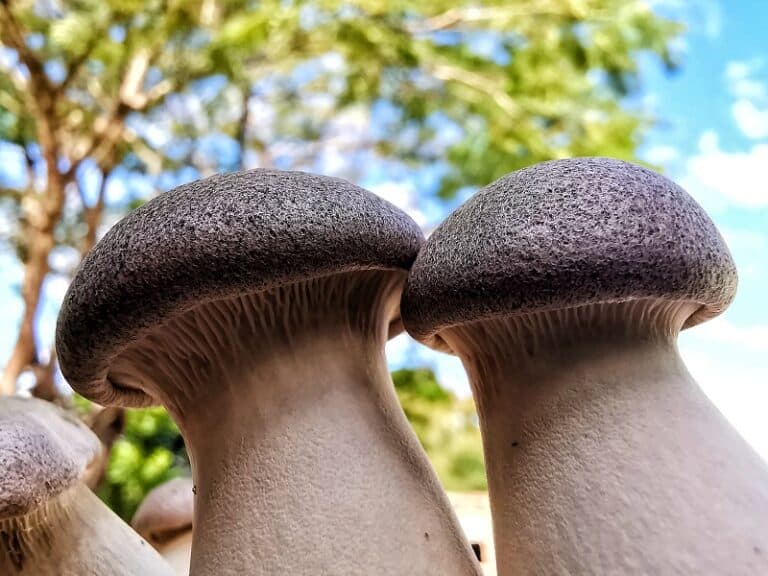
How To Open A King Oyster Grow Kit?
A different approach can be taken when opening a king oyster mushroom grow kit or fruiting block. Due to the top-fruiting nature of this species, the top can of the bag can be removed without need to fold back the plastic bag. This will create a reservoir which will retain CO2.
This species will produce thick meaty stems when grown in higher levels of CO2. The bag can be kept sealed until pins begin forming, making it one of the easiest mushrooms to fruit.
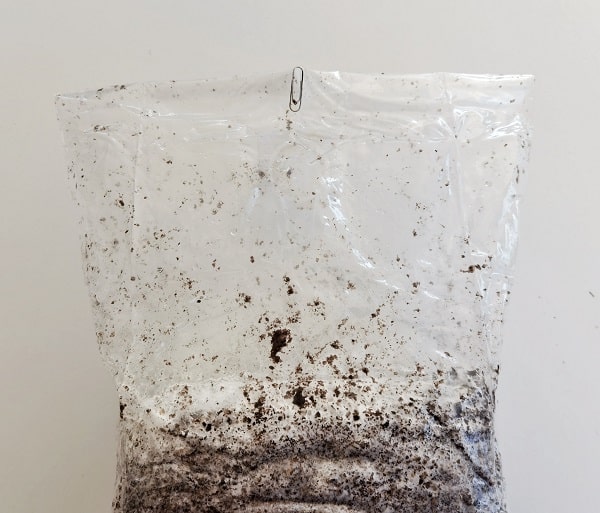
What Is A Casing Layer?
In the world of mushroom cultivation, the casing layer is a term that frequently comes up, especially in the context of growing certain types of mushrooms like Psilocybe cubensis or King Oyster mushrooms. Understanding what a casing layer is and its purpose is crucial for anyone interested in advanced mushroom growing techniques.
A casing layer is essentially a top layer of non-nutritious material applied over the colonized substrate in which the mushrooms are growing. This layer serves several key functions:
Moisture Regulation: The casing layer helps to retain moisture within the substrate. Mushrooms require a humid environment to grow, and the casing layer ensures that the necessary moisture is maintained, without over-saturating the substrate.
Microclimate Creation: The casing layer creates a microclimate that is ideal for mushroom pinning – the initial stage of mushroom growth. This layer often has a texture and moisture level that mimics the natural environment in which mushrooms thrive, encouraging the development of mushroom primordia (or pins).
Protection: It acts as a barrier against potential contaminants, protecting the nutrient-rich substrate from airborne bacteria and molds that can disrupt or ruin a mushroom crop.
Physical Support: For some mushroom species, the casing layer offers physical support for the developing mushrooms, helping them to grow upright and assisting in the formation of well-developed caps.
The composition of the casing layer can vary but typically includes materials like peat moss, vermiculite, coco coir, or a blend of these. The key is that the casing material should be non-nutritive; it’s not intended to feed the mycelium but rather to create the optimal conditions for mushroom formation.
A casing layer is an essential component in certain mushroom cultivation setups. It plays a vital role in moisture retention, microclimate creation, and protection against contaminants, all of which are crucial for yielding a successful mushroom crop. Understanding how to correctly apply and maintain a casing layer can significantly enhance the quality and quantity of your mushroom harvest.
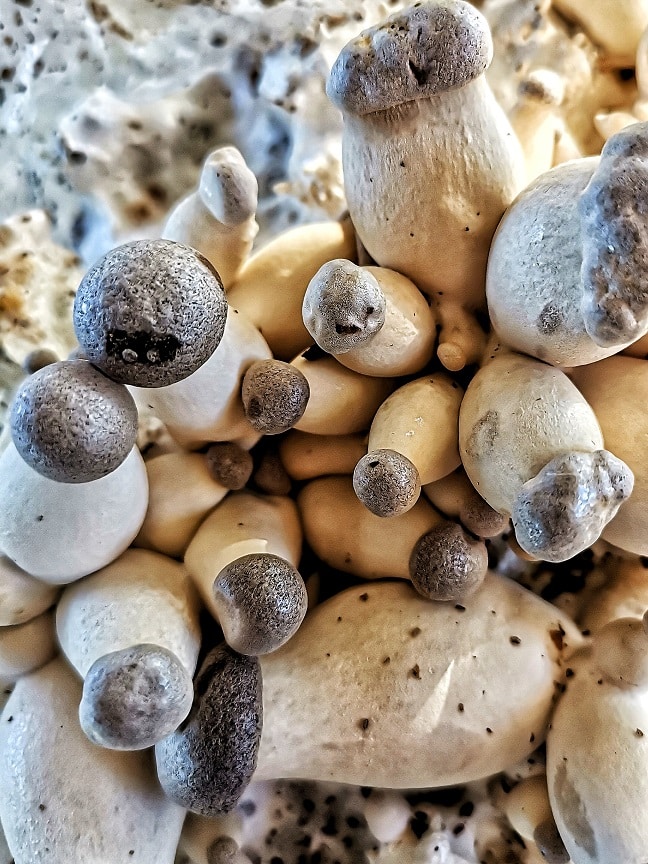
King Oyster Mycelium Appearance
King oyster mushroom mycelium is similar in appearance and structure to white oyster mushroom mycelium. The strands of hyphal threads will grow vigorously creating a thick, dense mat of mycelium if left undisturbed.
Like most species the mycelium will be noticeably less visible after agitation however the grain spawn will remain viable and ready for use.
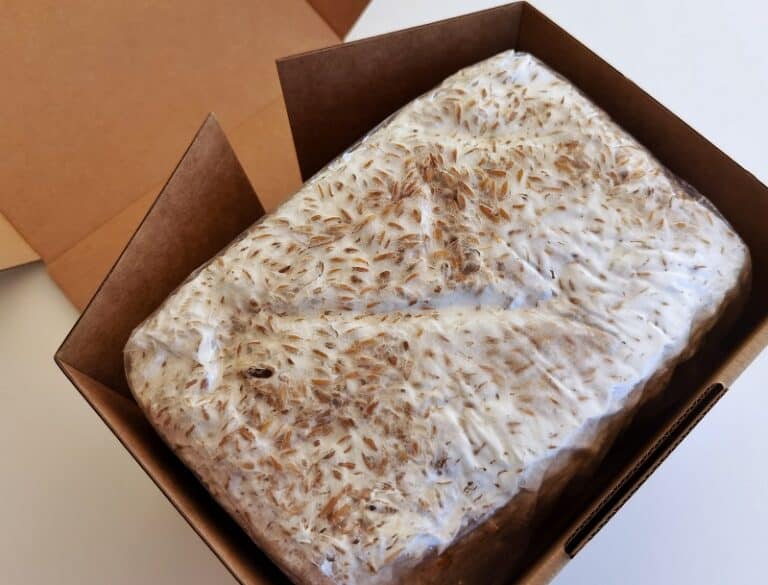
King Oyster Time Line
- Agar/Liquid Culture to Grain – 3 weeks
- Grain to Grain/Hardwood Substrate – 3 weeks
- Fruiting Chamber to 1st Flush – 1 week
- 1st Flush to 2nd Flush – 2/3 weeks (maintain high humidity)
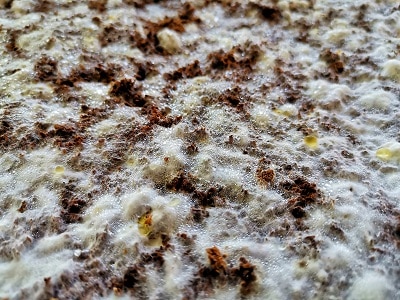
King Oyster Spawn Run & Fruiting Conditions
- Spawn Run – 10 – 25 degrees Celsius
- Fruiting Conditions – 7 – 20 degrees Celsius
- Humidity above 80%
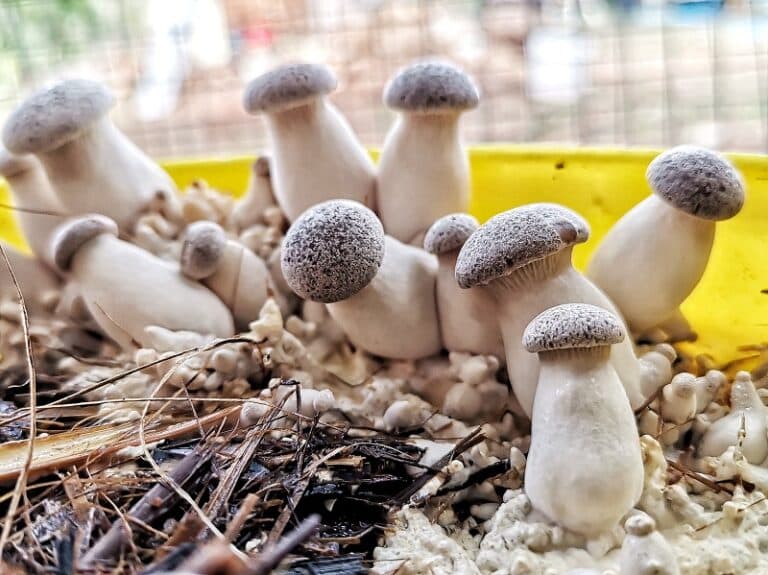
The WACOOL Reptile Fogger is a top-tier device designed to provide optimal humidity control for both reptile terrariums and mushroom cultivation chambers. Here’s why it’s an essential tool for hobbyists and professionals:
Integrated Humidity Controller: This isn’t just a humidifier; it’s equipped with a built-in humidity controller. This feature allows for precise setting and maintenance of ideal moisture levels, crucial for the health of your reptiles or the success of your mushroom cultivation.
Generous Water Capacity: With a 4L reservoir, the fogger ensures extended operation without the need for frequent refilling. It’s a convenient set-and-forget solution for maintaining consistent humidity levels.
User-Friendly Setup: Designed for simplicity, the WACOOL Fogger is plug-and-play straight out of the box. Its ease of installation and straightforward instructions ensure quick and hassle-free setup.
Replaceable Humidity Probes: Longevity and accuracy are key, and this device offers both with its replaceable humidity probes. These probes ensure that your environment remains within the optimal humidity range over time.
Top Fill Design: Refilling the reservoir is a breeze thanks to the top-fill design. This feature eliminates the hassle often associated with refilling humidifiers, making maintenance effortless.
Whisper-Quiet Operation: Operating at a low noise level of just 35db, the fogger ensures a peaceful environment. It’s quiet enough not to disturb you, your pets, or the delicate growth of your mushrooms.
The WACOOL Reptile Fogger with its Humidity Controller is an excellent investment for those seeking precision, convenience, and efficiency in humidity management. Whether you’re a dedicated hobbyist or a seasoned professional, this device is sure to elevate your reptile care or mushroom cultivation experience.
